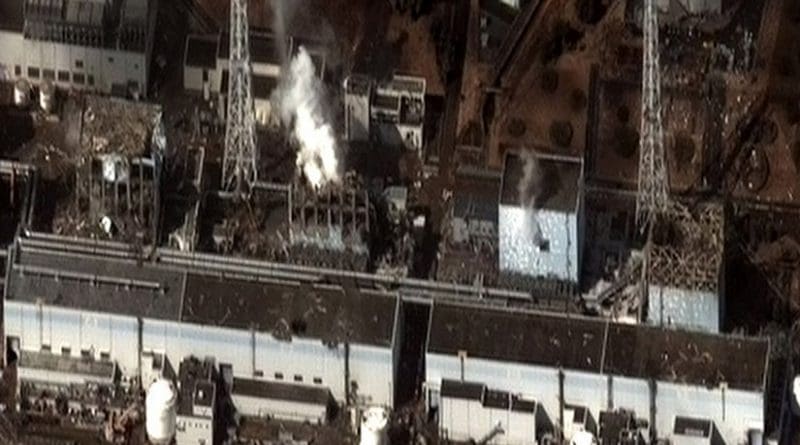Explainer: What’s Happening Inside Japan’s Damaged Nuclear Reactors
By VOA
As emergency workers struggle to pump sea water into the damaged reactors at the Fukushima power plant in Japan, the water inside the overheated core is boiling off faster than they can replace it. That steam from the boiled water has increased pressure inside the reactor, and as the water level dropped, they left fuel rods exposed to air.
The lower the water level drops, the higher the danger of rods melting in the rising heat.
Water levels dropped precipitously Monday inside one of the reactors at Fukushima, leaving the uranium fuel rods completely exposed twice and raising the threat of a meltdown. It happened just hours after a hydrogen explosion tore through the building housing a different reactor.
Water levels were restored after the first drop, but the rods remained partially exposed late Monday.
If attempts to cool the fuel rods fail, and the heat causes their casings to melt, radioactive materials could leak into the reactor. Scientists worry that those materials could melt into one large mass and burn through the floor of the reactor.
The reactor is housed behind two layers of concrete walls that are meant to contain radiation. A similar design protected U.S. citizens from major exposure near the Three Mile Island nuclear plant when it malfunctioned in 1979.
A representative of the Tokyo Electric Power Company told Japan’s NHK television that some radiation has been detected near the affected reactor. U.S. officials say that 17 personnel from the aircraft carrier Ronald Reagan tested positive for low levels of radiation after a helicopter rescue mission near Fukushima.


I was a trained nuclear power electrician on subs.
What I would really like to know is both (i) How and (ii) Why hydrogen was created … and/or stored inside the reactor compartment. And if it was produced from primary or secondary coolant … how did the hydrogen atoms get separated from the oxygen atoms that was originally water. (H2O) That generally only happens via electrolysis.
Or … did water get transformed into a plasma gas prior the hydrogen explosion?
My beliefs may be in error … but right now they do not think we are being told the whole story. Hmmm?
Since I do not come back often to this site … if someone knows the answer will you email me directly to ljohncarsonatmsndotcom